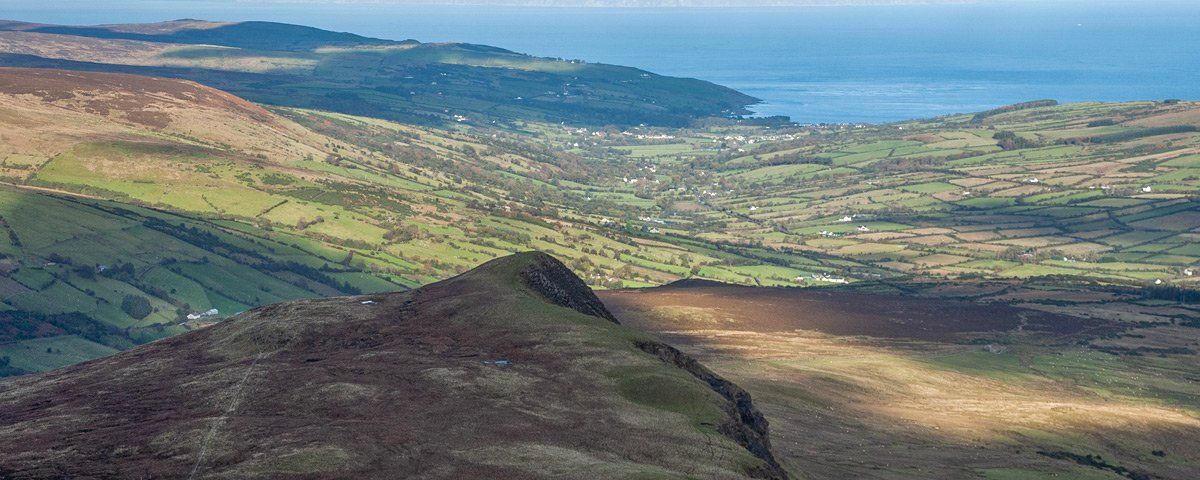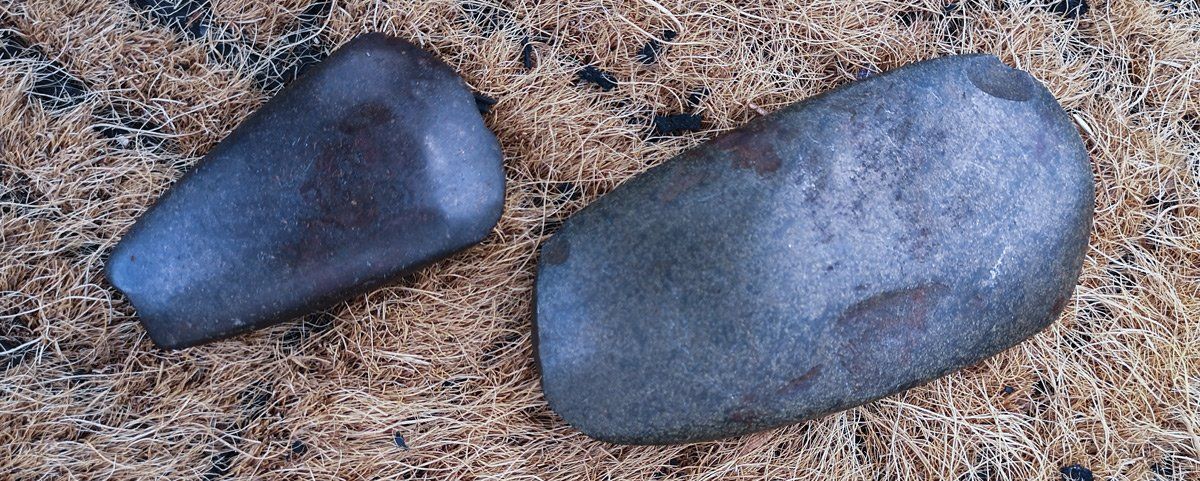Tievebulliagh
Tievebulliagh overlooks Glenaan and Glencorp, this dolerite basalt peak is 400 metres high and very distinct as you drive through Glencorp. It is internationally recognised as one of the sources of porcellanite in Ireland another exists on Rathlin Island. Porcellanite is a special type of rock formed from volcanic activity when an inter-basaltic bed of lithomarge (a clay-like material) is subjected to intense heat inside the earth producing a very hard, basalt-type rock. Unlike Flint, which is brittle, porcellanite can be polished smooth and worked to a sharp edge, this gave it a functional purpose. Once porcellanite was discovered here by the early settlers it became an ideal material to make axes and hacking tools and was a much sought after product not only locally but throughout the country.
Image above are two found by my uncle in fields near Ballycastle. Around 3000 BC, a productive Neolithic community lived here and mined porcellanite at the base of a cliff on Tievebulligh, producing thousands of axes and tools from it. Axes may have been produced and finished here as well as finished at other settlements like White Park Bay which was engaged in producing flint arrowheads and other flint tools before trading them throughout the British Isles and further afield. Axes produced of porcellantie from north Antrim have been found as far away as North-West Europe which demonstrates how widespread trade was from the north coast.


